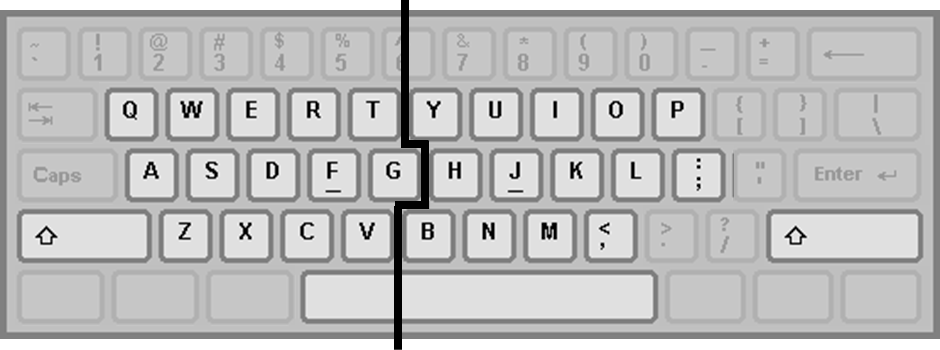On the following keyboard layout, as is common in the United States, the thick black line indicates which buttons are pressed with the left hand and which with the right hand. Only the clearly displayed keys are relevant to the particular task, with 10 keys on the first and the second row, and 8 keys in the third row. Shift ($$\Uparrow$$) is used to indicate uppercase letters (with shift) and lowercase (without shift), or the characters on top - resp. at the bottom - of the key.

Someone has typed a line of text on this keyboard, but his two hands were swapped (you should give it a try). If he were typing with the shift key pressed, all consecutive characters in the first row would give YUIOPQWERT rather than QWERTYUIOP. If he were to type all characters in the third row after each other, without pressing the shift key, he receives bnm, zxv rather than zxcvbnm, (including the comma). The swapping of the hands does not affect the typing of spaces.
Input
A sentence that has been typed on a keyboard with layout as is common in the United States, but in which case the left and right hand were swapped.
Output
The original sentence, as it would be typed if the hands were held normally. The use of the shift key must be retained when typing.
Example
Input:
Lohxmi ej pai mrwxpoq pahp mr,ioj pai crjp peci brxijOutput:
France is the country that covers the most time zones